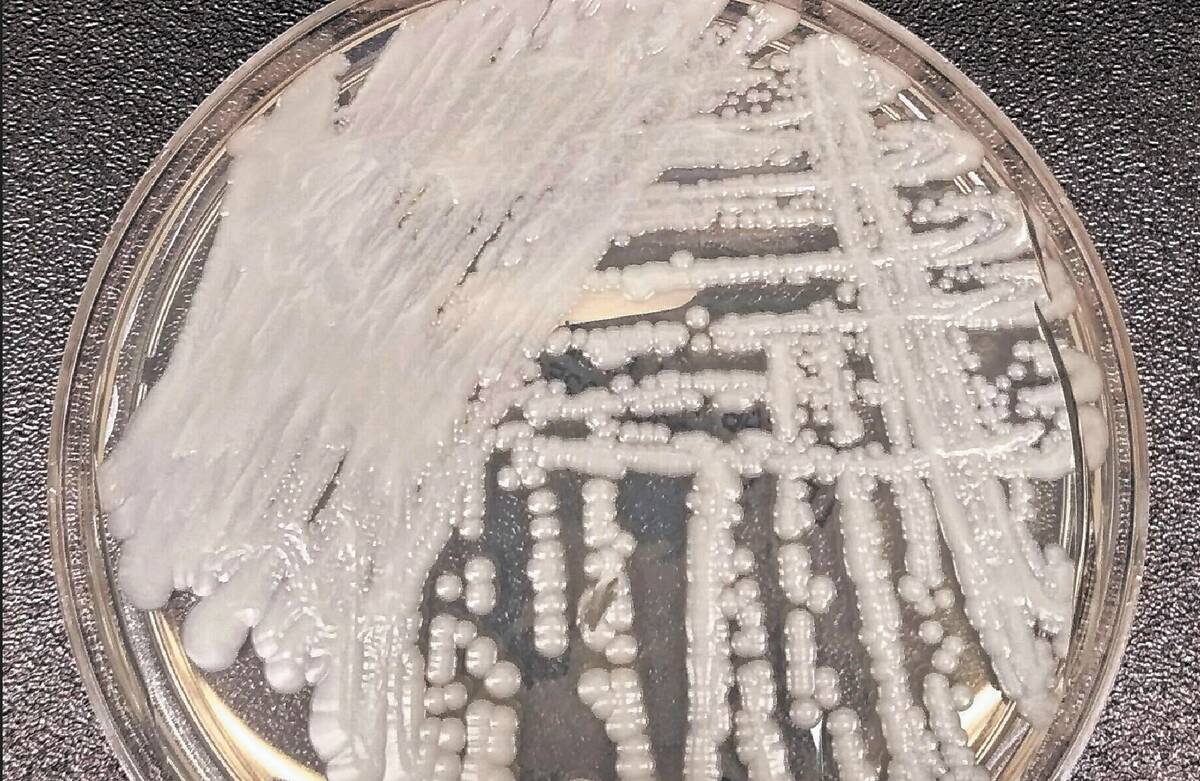‘Superbug’ fungus cases hit record high in Southern Nevada

January marked a record high for the number of “superbug” Candida auris cases reported by Southern Nevada hospitals and nursing homes, state health data shows.
Facilities last month reported 69 invasive infections — also called clinical cases — of the potentially deadly fungus, according to data from the Nevada Division of Public and Behavioral Health. Also reported were 133 colonization cases, in which the fungus typically dwells in folds of the skin without making a person ill. Although the data is statewide, the vast majority of cases have been detected in Southern Nevada.
January’s peak may be due to reporting lags and the adoption of a new state regulation requiring facilities to report cases, according to the health division. Previously, reporting had only been recommended.
“There could have been issues with reporting over the holidays and the regulations passed in December, so there may be increased reporting thereafter,” division deputy administrator Julia Peek wrote in an email.
Last high in October
The first Southern Nevada case of C. auris was reported in August 2021. By April of 2022, state health officials were alerting medical facilities to outbreaks in the region, as first reported in the Review-Journal. After rising in 2021 and 2022, the number of clinical cases remained fairly steady in 2023 before reaching a high of 63 in October and then dipping, according to updated data. Colonization cases, which have been steadily rising, are detected by screening people without symptoms, which usually is done by swabbing the skin.
The fungus can spread person-to-person through touching and also from contact with contaminated surfaces or equipment, where it can survive for long periods. It typically spreads in hospitals and long-term care facilities, where patients with lengthy stays and catheters, lines or tubes entering their bodies are most susceptible.
The drug-resistant fungus can invade a person’s bloodstream, brain, heart or other organs, which may lead to death. It also can colonize on the skin, invisible to the eye, but still be transmissible, according to the Centers for Disease Control and Prevention.
The most common symptoms of an invasive infection of C.auris — such as one of the bloodstream, brain or heart — are fever and chills that don’t improve after antibiotic treatment for a suspected bacterial infection.
There have been 1,085 clinical cases and 1,785 colonizations reported since 2021 in Nevada, with most in Southern Nevada. Nevada reported the highest number of cases in the country in 2022, despite that it was one of 28 states that did not mandate reporting.
Nevada health officials have said that the numbers reflected proactive efforts to detect the pathogen and control its spread.
Sunrise Hospital and Medical Center, the largest acute-care facility in Nevada, has reported the highest number of cases in the state. Unlike some other facilities, it actively screens at-risk patients for the fungus, its officials said.
It assesses all patients over the age of 18 for being at-risk for the fungus and tests those at high risk, Dr. Steven Merta, the hospital’s chief medical officer, wrote in an email Wednesday. In January, the hospital began weekly testing of burn patients, a step that exceeds CDC recommendations.
‘A bad path to be on’
CDC representatives said last spring that the fungus was spreading at an “alarming rate” in the U.S., with a tripling of the number of cases resistant to the most recommended anti-fungal used to treat infections.
The fungus continues to mutate in ways that make existing drugs less effective, said Mark Pandori, director of the Nevada State Public Health Laboratory at the University of Nevada, Reno.
The state lab, which genetically analyzes the state’s cases of C. auris, has seen a sharp rise in mutations in the past year that make treatment less effective, allowing the fungus to continue to spread and to evolve, Pandori said.
“Those mutations are showing up, and it’s a bad path to be on,” he said.
More than one in three people who develop an invasive infection die, according to the CDC. Many of those who die have other serious medical conditions. Healthy people typically do not develop invasive infections.
The state no longer is disclosing the number of deaths in people with the fungus, saying the cause of death in these cases is difficult to determine and there is no national definition for a death from C. auris. Critics have noted that in contrast, deaths in patients with COVID-19 who had underlying health conditions were counted as COVID-19 fatalities by the federal government.
As of March 2023, there had been 103 deaths in patients with C. auris, a Nevada Department of Health and Human spokesperson told the Review-Journal last year.
For more coverage of the Candida auris outbreaks, visit lvrj.com/superbug.
Contact Mary Hynes at mhynes@reviewjournal.com. Follow @MaryHynes1 on X. Hynes is a member of the Review-Journal’s investigative team, focusing on reporting that holds leaders and agencies accountable and exposes wrongdoing.